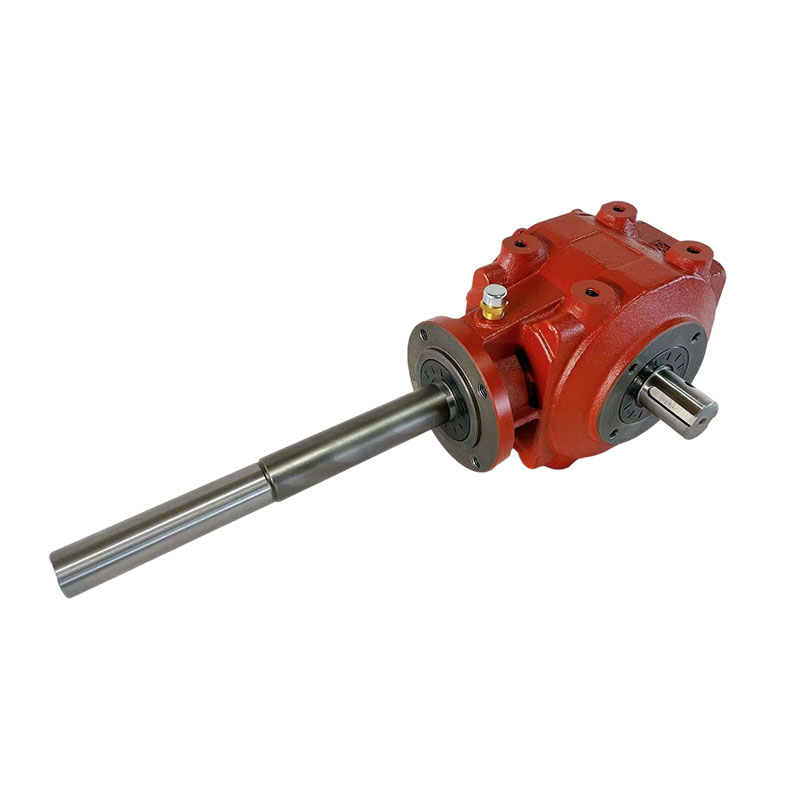Agriculture Gearboxes: Essential Components for Modern Farming
2025-01-21
In the world of agriculture, efficiency, durability, and reliability are key factors for ensuring smooth operations and maximizing productivity. From tractors to harvesters, agricultural equipment plays a vital role in the day-to-day running of a farm. One critical component that ensures this machinery operates efficiently is the agriculture gearbox. These mechanical devices help transfer power from the engine to the moving parts of agricultural machinery, enabling farmers to complete various tasks like plowing, sowing, and harvesting.
In this blog, we’ll explore what agriculture gearboxes are, their importance in farming, the types available, and how to choose the right one for your agricultural machinery.
What is an Agriculture Gearbox?
An agriculture gearbox is a mechanical device used in agricultural machinery to transfer power from the engine to other components. It adjusts the speed and torque of the machinery, allowing different parts, such as wheels, augers, or blades, to move at the required speed for specific farming tasks.
Agricultural gearboxes come in various sizes and configurations, depending on the application. They are designed to handle heavy-duty workloads, operate in harsh environmental conditions, and provide long-lasting performance.
The core function of an agricultural gearbox is to ensure that power generated by the engine is effectively transmitted to the working parts, enabling the machinery to operate at optimal efficiency.
Importance of Agriculture Gearboxes
1. Efficient Power Transmission
Agricultural gearboxes are essential for the efficient transfer of power from the engine to various parts of farming equipment. Whether it's a tractor, harvester, or irrigation system, gearboxes help achieve the desired speed and torque to maximize operational efficiency.
2. Durability and Longevity
Agriculture gearboxes are designed to handle the intense workload of agricultural machinery. They are built to be durable, reliable, and capable of withstanding harsh weather conditions, soil exposure, and other tough working environments found on farms.
3. Versatility
Agriculture gearboxes are adaptable to a wide range of farming equipment. Whether it's for tilling, planting, harvesting, or irrigation, there’s a gearbox suited for different types of machinery, ensuring that each piece of equipment operates as intended.
4. Cost Savings
Well-maintained gearboxes contribute to the overall longevity of agricultural machinery. Proper maintenance and the use of high-quality gearboxes help reduce the frequency of breakdowns, minimizing downtime and repair costs.
5. Improved Fuel Efficiency
By ensuring smooth power transfer and reducing energy loss, agriculture gearboxes contribute to better fuel efficiency in machinery. This helps reduce operating costs, which is crucial for farmers looking to increase the profitability of their operations.
Types of Agriculture Gearboxes
Agricultural gearboxes come in a variety of designs to suit the needs of different types of farming equipment. Here are some of the most common types:
1. Bevel Gearboxes
Bevel gearboxes are designed to transfer power between two shafts that are angled to each other. These gearboxes are often used in machinery where power needs to be transferred at a 90-degree angle, such as in rotary cutters or some types of harvesters.
2. Worm Gearboxes
Worm gearboxes are used to provide high torque in machinery with a low-speed output. These gearboxes are often found in equipment like conveyors, sprayers, or irrigation systems. Their unique design allows for the reduction of speed and the increase of torque, making them ideal for heavy-duty applications.
3. Helical Gearboxes
Helical gearboxes use helical gears that are angled to provide smoother and quieter operation compared to straight gears. These are commonly used in tractors, combines, and other agricultural machinery where smooth operation is a priority. They are known for their high load capacity and efficiency.
4. Planetary Gearboxes
Planetary gearboxes, also known as epicyclic gearboxes, feature a unique design with multiple gears that rotate around a central gear. These gearboxes are used in applications where space is limited and high torque is required, making them suitable for various agricultural applications, including harvesting and planting equipment.
5. Inline Gearboxes
Inline gearboxes are designed to transfer power between two parallel shafts. These are commonly found in machines that require continuous motion and efficient power transfer, such as tillers and seeders. Inline gearboxes are relatively simple and easy to maintain, making them a popular choice in many agricultural applications.
6. Countershaft Gearboxes
Countershaft gearboxes are used in machinery to transfer power from the engine to multiple output shafts. These gearboxes are often found in vehicles like tractors, where they help provide power to various attachments, such as plows, mowers, and balers.
How to Choose the Right Agriculture Gearbox
Selecting the right gearbox for your agricultural machinery is essential for ensuring optimal performance and longevity. Here are a few factors to consider when choosing a gearbox:
1. Torque Requirements
The amount of torque required depends on the type of machinery and the task being performed. For example, heavier equipment like combines or tractors may require higher torque gearboxes, while smaller machines may function well with lower torque gearboxes.
2. Speed Range
Different agricultural tasks require different speeds. Some tasks, like planting, may require slower speeds, while others, like harvesting, may require faster speeds. It’s essential to choose a gearbox that matches the specific speed requirements of your machinery.
3. Environmental Conditions
Agricultural machinery is often exposed to harsh conditions, including moisture, dust, and extreme temperatures. When choosing a gearbox, it’s important to ensure that it is built to withstand these environmental factors. Look for gearboxes with durable seals, rust-resistant materials, and other features that can help protect against wear and tear.
4. Maintenance and Serviceability
Choose a gearbox that is easy to maintain and service. Regular maintenance is essential to keep the gearbox functioning smoothly. Opt for gearboxes with easy-to-replace parts and those that are designed for easy lubrication and oil changes.
5. Compatibility with Equipment
Ensure that the gearbox you choose is compatible with your agricultural machinery. The gearbox should match the machine’s engine power, output shaft, and other specifications to ensure smooth and efficient operation.
6. Quality and Reliability
Always choose high-quality gearboxes from reputable manufacturers. Investing in reliable gearboxes ensures that you won’t experience frequent breakdowns, which could lead to costly repairs and downtime.
Conclusion
Agricultural gearboxes are crucial components that power the machinery used in farming, enabling farmers to efficiently carry out essential tasks. With different types of gearboxes available, from bevel and worm gearboxes to helical and planetary options, there’s a solution for every need in modern agriculture. By selecting the right gearbox, farmers can improve productivity, reduce maintenance costs, and ensure the longevity of their equipment.
Whether you’re cultivating the land, planting crops, or harvesting produce, a well-maintained agricultural gearbox helps make the entire farming process smoother and more efficient. So, investing in the right gearbox is not just a choice – it’s a vital step toward optimizing your farm's performance and profitability.



